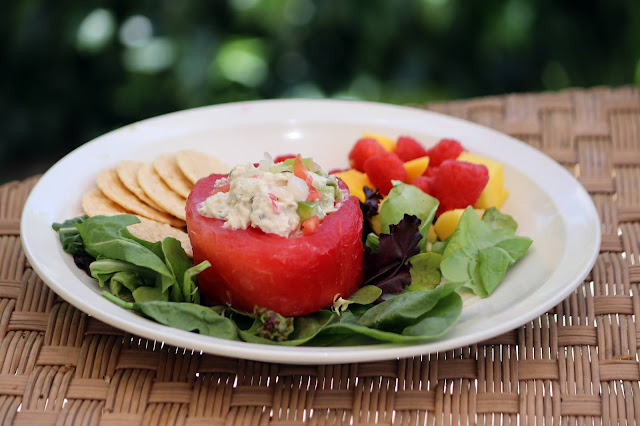Horseradish is a perennial plant with mustard, wasabi, broccoli, and cabbage. It grows up to 4.9 feet (1.5 meters) tall and is cultivated primarily for its large, white, tapered root.
The intact horseradish root has hardly any scent. When cut or grated, enzymes break down sinigrin (a glucosinolate) to produce allyl isothiocyanate (mustard oil), irritating the sinuses' mucous membranes and eyes. Grated horseradish should be used immediately or preserved in vinegar for the best flavor. Once exposed to air or heat, it will lose its pungency, darken in color, and become unpleasantly bitter-tasting.
Growing Horseradish
Nutrition: The fresh plant contains an average 79 mg of vitamin C per 100 g of raw horseradish.
Culinary Use
Cooks use the terms "horseradish" or "prepared horseradish" to refer to the grated root of the horseradish plant mixed with vinegar. Prepared horseradish is white to creamy beige in color. It will keep refrigerated for months but eventually darken, indicating it is losing flavor and should be replaced. The leaves of the plant, while edible, are not commonly eaten, and are referred to as "horseradish greens", which have a flavor of the root.
Cooks use the terms "horseradish" or "prepared horseradish" to refer to the grated root of the horseradish plant mixed with vinegar. Prepared horseradish is white to creamy beige in color. It will keep refrigerated for months but eventually darken, indicating it is losing flavor and should be replaced. The leaves of the plant, while edible, are not commonly eaten, and are referred to as "horseradish greens", which have a flavor of the root.
Horseradish sauce made from grated horseradish root and vinegar is a popular condiment; used with roast beef and other dishes, including sandwiches or salads. In the USA, the term "horseradish sauce" refers to grated horseradish combined with mayonnaise or salad dressing. Prepared horseradish is a common ingredient in Bloody Mary cocktails and in cocktail sauce and is used as a sauce or sandwich spread.
Recipes
Baked Salmon with Horseradish Sauce
Number of Servings: 2
Ingredients:
2, 5 oz Salmon filets
2 Tbs. Lemon Juice
1 Tbs. Worchester Sauce
1 Tbs. Mayonnaise, light
1 Tsp. Horseradish
Paprika
Directions:
Preheat oven to 400 degrees F. Rinse filets and pat dry. In baking dish, combine lemon juice and Worchester sauce. Add salmon and coat both sides with the mixture. Combine mayonnaise and horseradish, mix well, and spread over top of salmon filets. Sprinkle paprika over filets. Cover the dish with foil. Bake in 400 degrees F oven for eight minutes. Uncover and continue baking for 3 more minutes.
Preheat oven to 400 degrees F. Rinse filets and pat dry. In baking dish, combine lemon juice and Worchester sauce. Add salmon and coat both sides with the mixture. Combine mayonnaise and horseradish, mix well, and spread over top of salmon filets. Sprinkle paprika over filets. Cover the dish with foil. Bake in 400 degrees F oven for eight minutes. Uncover and continue baking for 3 more minutes.
Nutrition Analysis
Additional Recipes
1. About.com, Home Cooking, Horseradish Recipes
2. Horseradish Information Council, Recipes
3. Huffpost Taste, Horseradish Recipes
Medical
More evidence is needed to rate the effectiveness of horseradish for the following medical uses: Urinary tract problems, Fluid retention (edema), Cough, Bronchitis, Achy joints and muscles, Gout, Gallbladder disorders, Sciatic nerve pain, Colic, and Intestinal worms in children.
Side Effects, Precautions and Warnings
Mustard oil is extremely irritating to the lining of the mouth, throat, nose, digestive system, and urinary tract. Horseradish can cause side effects including stomach upset, bloody vomiting, and diarrhea. It may also slow down the activity of the thyroid gland.
When used on the skin, horseradish is possibly safe, but in large quantities may cause skin irritation and allergic reactions.
Horseradish is unsafe in children less than 4 years old. In young children, it may cause digestive tract problems.
Horseradish in large amounts is unsafe when pregnant and breastfeeding. The mustard oil in Horseradish can be toxic and irritating. Horseradish tincture should not be used regularly or in large amounts because it might cause a miscarriage.
Horseradish is not recommended for any of the following conditions: stomach or intestinal ulcers, inflammatory bowel disease, infections, or other digestive tract conditions.
Horseradish may worsen hypothyroidism.
There is a concern horseradish might increase urine flow. This could be a problem for people with kidney disorders.
References and Resources
1. Wikipedia, Horseradish







































